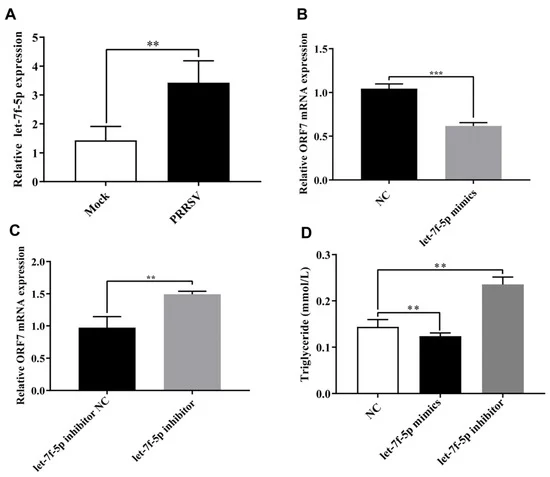Breakthrough Study Identifies Key miRNA Targets to Combat Global PRRS Virus in Pigs
August 26, 2024
Transcriptome analysis of PRRSV-infected cells revealed 1718 differentially expressed genes, primarily associated with lipid metabolism.
Previous research has shown that miR2911 inhibits both influenza virus and SARS-CoV-2 infections.
Experimental results from dual luciferase reporter gene assays and miR2911 overexpression assays demonstrated that miR2911 significantly inhibits PRRSV replication.
The research was conducted by a team from multiple Chinese institutions, including Shihezi University, and was published in the journal Vet. Sci. in August 2024.
Porcine reproductive and respiratory syndrome (PRRS), caused by the PRRS virus (PRRSV), results in significant economic losses for the global pig industry.
PRRSV strains are categorized into two main genotypes: European (type 1) and North American (type 2), each exhibiting distinct genomic features.
The ongoing emergence of recombinant PRRSV strains presents challenges for effective prevention and control measures.
A recent study provides novel insights into the miRNA-mediated mechanisms of PRRSV pathogenesis, suggesting let-7f-5p as a potential target for antiviral therapies.
The research demonstrates that let-7f-5p directly targets the lipid metabolism regulator SREBP2, influencing the expression of genes involved in lipogenesis.
These findings underscore the importance of understanding PRRSV-host interactions to develop effective antiviral strategies.
Target sequence analysis revealed that the target region for miR2911 is highly conserved across different strains of PRRSV, with only minor base mutations present.
Six specific target regions of PRRSV within the orf1 gene (Nsp1 and Nsp2) were identified as being targeted by miR2911 using miRanda software.
Summary based on 2 sources
